New Features Plus 12
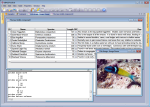
New: GridEX (dGrid)
dBase found and integrated a very powerful Grid component late in the development cycle and was able to get the base functionality in place. However, the new GridEx has a great deal more potential, but we want to work with the dBASE user community to help decide the most critical features that need to be implemented.
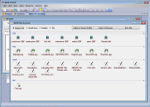
New: ListView
ListView is a brand new native data-aware dBASE component designed for efficient display of vertically scrolling lists of changing data.

Upgraded: Grid
We have added some small enhancements to the current Grid found inside dBASE. Things like highlighting the current cell focus and other cosmetic wants by the user community.
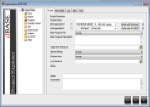
NEW: Embedded Runtime
One of the most requested features over the past 20 years, the product now allows developers to “embed” the dBASE Runtime into a single executable (.exe). This allows users to deploy dBASE applications without having to ship the runtime files. BDE libraries/files are still needed when using dBASE, Paradox, or ODBC access to tables. ADO does not require the BDE!
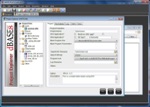
NEW: BDE Only Installer
This highly requested features allows for ultimate control over the install process when using Project Explorer. Use the Embedded Runtime with or without the BDE, all can be done with a click of the mouse.

Updated: Resource Handling
dBASE now allows developers to pull additional resources out of a resource.dll for better portability and eased of deployment. By adding the /png to the command dBASE now has the ability to pull .png graphic from a resource dll, which adds significant upgrade to .bmp in size and quality. In addition, these resources also handle the Alpha color channel properly and work great with the new Resource Libraries included in the product.

NEW: dBugger™
The new debugger now adds the same look and feel of dBASE, plus includes the same editor that dBASE uses for better productivity and ease of use. The new dBugger™ 1.0 adds a new communications channel between dBASE and the dBugger™ to allow for faster execution during debugging and removing many of the deadlock situations that occurred in the older debugger. In addition, it also introduces the new fly-by inspection feature that allows for fast variable and object inspection. It is also being compiled with the same compiler as the dBASE product thus making it much more stable over prior included debuggers. It also introduced better window handling for Watches, Variables, Trace, and Call Stack operations.
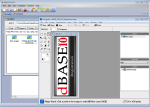
NEW: Image Editor™
The Navigator now includes a built-in advanced Image Editor called Fotografix. This open source product will allow users to modify existing images or create new images to be used inside their dBASE PLUS 10 creations. If you already have an Image Editor defined in Windows, no problem, dBASE will use it instead but still give you the option to use Fotografix for advanced image processing whenever it is needed.
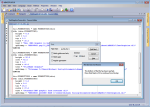
Updated: dComplete™ 2.0
dComplete™ 2.0 has been completely updated to support more dBASE specific coding structures. It now supports more commands in the command window, better filtering inside the code editor, and a more complete listing of objects, methods, and events.
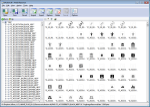
NEW: Royalty-FREE Images
These new libraries are based off of the open source Google Modern application specification and are open source and royalty-free for use in your internal and external applications. They have been conveniently located in easy to use Resource dll(s) for ease of deployment.

dBASE™ PLUS 10 Help
dBASE™ PLUS 10 now includes integrated Web help. This makes it easier to find crucial information in a timely manner. The help system has also been updated with the latest material on getting the most out of the latest release of dBASE!
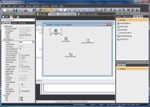
ADO Support – Components
Being able to use an ADO data source is great, but we did not stop there. We have also added in several custom ADO components that make working with ADO a breeze in dBASE PLUS 8.
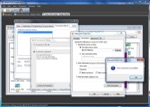
ADO Support – Connectivity
More has changed under the hood of dBASE PLUS 8 than just support of Microsoft’s latest operating system. We have also added support for connecting to ADO datasets.
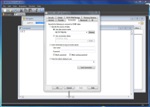
ADO Support – UDL
The new support for ADO includes the ability to create and use Microsoft based UDL files. A UDL File stands for universal data link (.udl) file is essentially a text file that contains the connection string for an OLE DB data source. This connection string can then be loaded into dBASE and used by the components and tools to connect to ADO data sources.

Backgrounds and Textures
dBASE PLUS 8 has a wide range of new graphical features, that include Icons, Application Themes, new components, and also new textures. Developers can now use these textures to create modern looking interfaces that are very common today. These textures are used in the background property of the form and the product supports all common window sizes for easy application building.

Drag and Drop SQL Builder
Completely redesigned, the SQL Designer can be used to quickly pull all of your data together in a visual way. You can see the relationships between each dataset, and create result sets that meet the true business needs of your application.
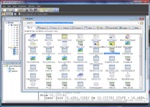
Enhanced Projekt-Navigation
One of the important features of an MDI interface, which dBASE PLUS 8 is based, is the ability to quickly find Windows, Wizard, tool windows in the interface. The new Window tab manager can be customized to the developer’s desire and really help find and manage open windows.
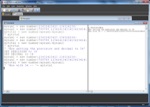
“High Precision Math”
Implemented via 128 bit decimal floating point numbers that support up to 34 digits of precision. A decimal floating-point number is stored using a base 10 value, which reduces conversion errors that normally occur switching back and forth to base two floating-point values.
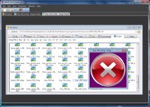
Glyfx Icons und Grafiken
There is more to staying current than just maintaining functionality. While the user interface for dBASE PLUS 8 has itself been enhanced to look more modern, we realize that the applications dBASE users have created also need to be updated with the times. That is one reason dBase, LLC has partnered with Glyfx to provide a rich set of visually stunning graphics that can be used to enhance the look of any dBASE application.
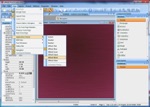
Modern Application Themes
The new IDE supports Microsoft’s themes, these are packaged colors, fonts, and window looks. The current themes supported in dBASE PLUS 8 include most of the standard themes using in Microsoft office 2007 and 2010.
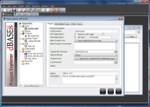
Project Explorer
The updated project file allows users to build applications with all needed resources (tables, forms, queries, bitmaps, and so on). In addition to keeping things organized, having a project file lets you Compile and build a project. It also allows you to set properties for the project as a whole and set properties for individual files. It will allow you to designate which file should be the first to open when your executable file is run.

Revised Help-System
Getting help when and where you need it is important to everyone. In dBASE PLUS 8 we have updated the content and enhanced the in app help system just as we have been expanding our available training solutions for dBASE users. Knowing how to get things done right in dBASE PLUS 8 is as important to us here at dBase, LLC as it is to you.

Tool Palette Docking Support
In addition to supporting themes inside of dBASE PLUS 8, it also support docking of tool windows. Therefore, tool windows like Component, Format, Fields, and the Inspector can now be docked to the sides of the screen, stacked on top of each other with a tab interface, or strategically laid out to the developer content. In addition to supporting tool windows, the product also supports movable menus as well.

Updated Look and Feel
dBASE PLUS 8 now includes an updated and modernized interface. These additional features include new professional icons, updated wizard graphics, and support for Microsoft Themes. The product appearance has been updated as the new default theme is based on the black color scheme, which is configurable by the user at any time including while the product is running.

Addition of Active-X Tools
dBASE has always had the ability to run ActiveX controls since they were introduced by Microsoft. dBASE has started to add additional ActiveX controls to the product to fill-in areas of functionality that is currently missing from the standard components included in dBASE. The new controls are focused on areas people have requested:
dJvClockX Control – A quick clock control for standing time management. Support both digital and analog look and feel, support Dates, and it also has full support for Alarms.
dJvDriveComboX Control – This is a simple window Drive combobox. It will show all the registered drives on a system. Find and interact with those drives in a couple clicks.
dJvDirectoryListBox Control – This is a Directory listing component and can be easily connected to the dJvDriveComboX component. This will allow for traversing a drive and directory on a registered drive. Many advanced features are included with its Properties, Methods, and Events.
dJvFileListBoxX Control – dJvFileListBoxX is a file listbox that shows all of the files inside a particular directory on a registered drive. This component works very well with both the dJvDriveCombo Control and the dJvDirectoryListBox control. This component has many advanced features that are exposed from its Properties, Methods, and Events.
dBASE also supports 3rd party ActiveX components. The .ocx or .dll that are accompanied with the ActiveX’s must be deployed with your application.
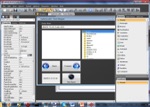
Windows 10 und Windows Server 2012
One of the biggest concerns on the minds of current dBASE users is the future. Will dBASE continue to work on future operating systems. With dBASE PLUS 10, we have certified that all major and minor features of the product continue to work well on Microsoft’s latest operating system, Windows 10.
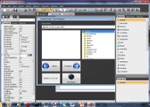
Callbacks
A callback allows you to write a function or method in dBL code and setup a pointer to it that can be passed to an external program – such as Windows or the BDE or some other 3rd party software that supports callbacks. Callbacks can be used to notify your program of specific events occurring with an external program OR to allow your program to modify what an external program is doing.